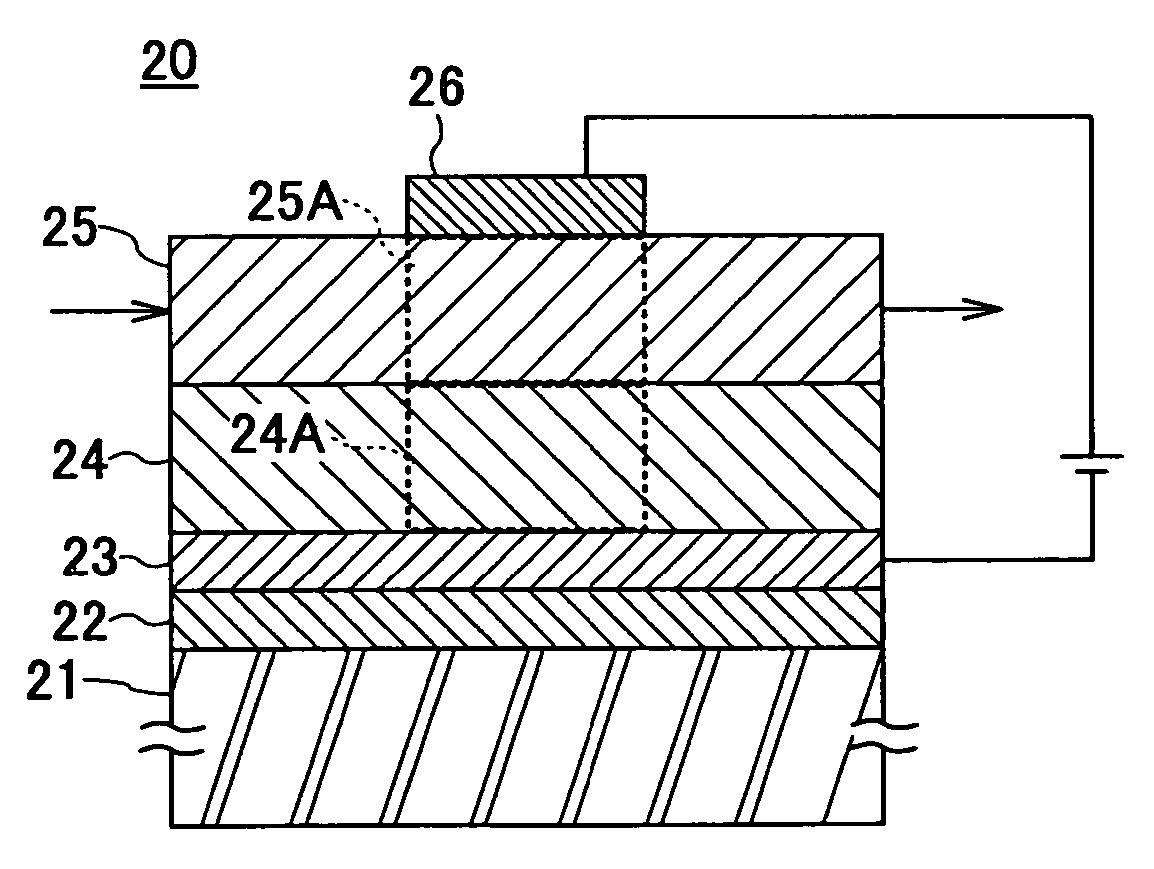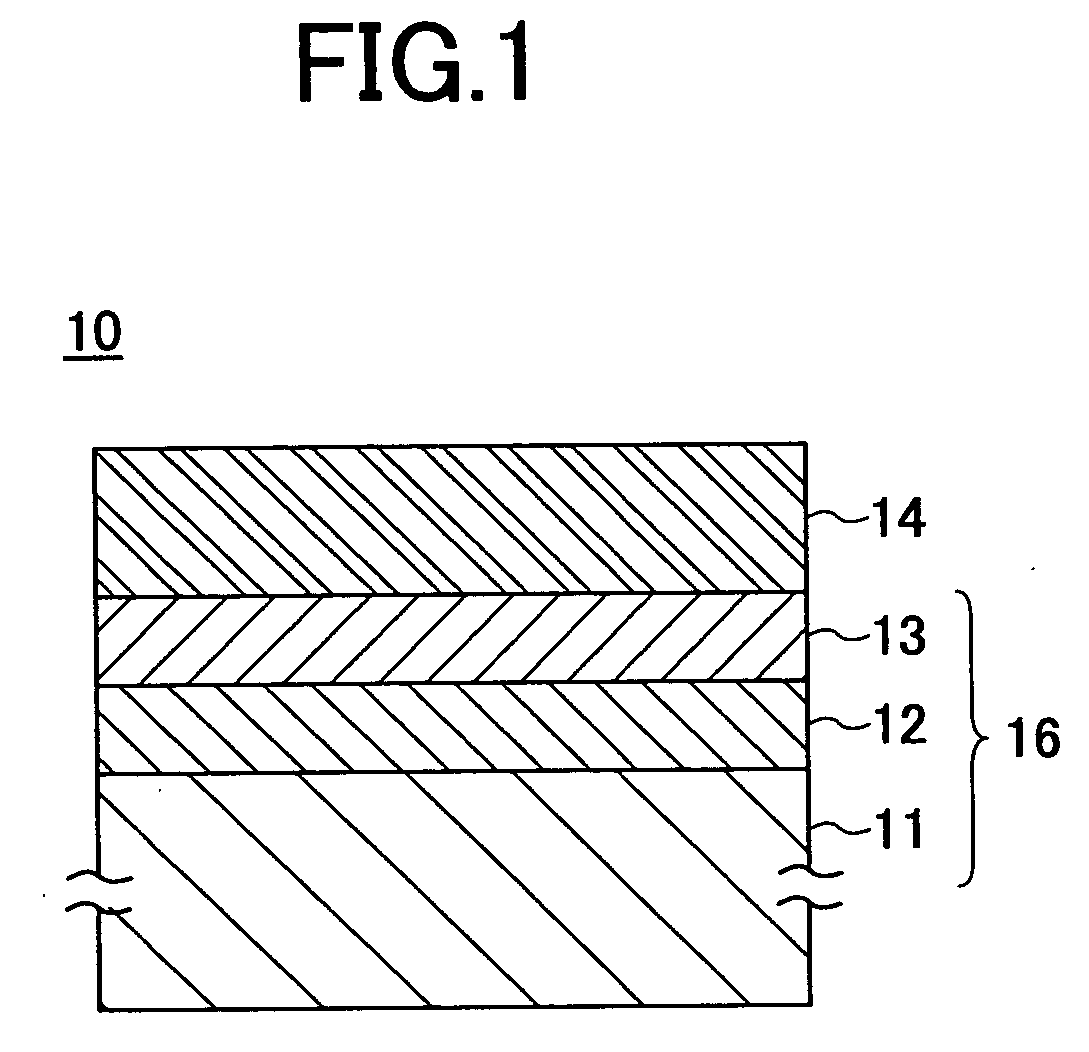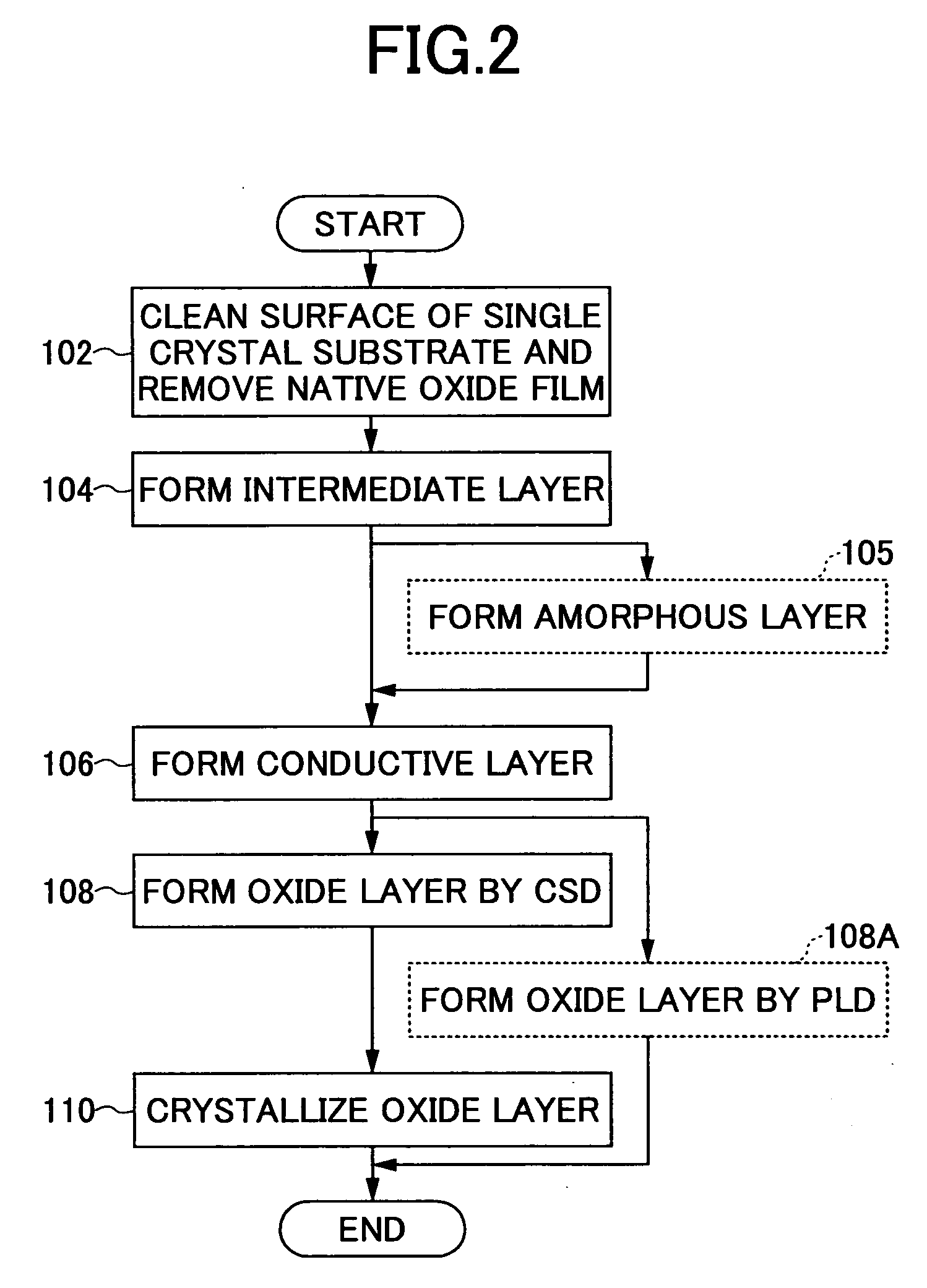Optical deflection element and method of producing the same
a technology of optical deflection element and optical deflection element, which is applied in the field of optical deflection element and the field of producing the same, can solve the problems of difficult to obtain single crystal oxide film, difficult to make them large, and difficulty in practical use, and achieve the effects of good crystallinity, and improving the crystallinity of magnesia spinel film
- Summary
- Abstract
- Description
- Claims
- Application Information
AI Technical Summary
Benefits of technology
Problems solved by technology
Method used
Image
Examples
first embodiment
[0098]FIG. 7 is a plan view of an optical deflection element according to a first embodiment of the present invention.
[0099]FIG. 8 is a cross-sectional view of the optical deflection element according to the first embodiment of the present invention.
[0100] As illustrated in FIG. 7 and FIG. 8, the optical deflection element 20 of the present embodiment includes a magnesia spinel film 22, a lower electrode 23, a lower cladding layer 24, a core layer 25, and an upper electrode 26, which are sequentially stacked on a silicon single crystal substrate 21. The magnesia spinel film 22, the lower electrode 23, a PLZT film acting as the lower cladding layer 24, and a PZT film acting as the core layer 25 are epitaxially grown on respective underlying layers thereof and accede the crystallinity of the respective underlying layers.
[0101] The optical deflection element 20 is a waveguide optical deflection element. Here, for example, the refractive index of the PZT core layer 25 is set to be 2....
second embodiment
[0123] The optical deflection element of the present embodiment is basically the same as the optical deflection element 20 of the first embodiment, except that an upper cladding layer is further provided on the core layer.
[0124]FIG. 9 is a cross-sectional view of an optical deflection element according to the second embodiment of the present invention. In FIG. 9, the same reference numbers are assigned to the same elements as previously described, and overlapping descriptions are omitted.
[0125] As illustrated in FIG. 9, an optical deflection element 30 of the present embodiment includes a magnesia spinel film 22, a lower electrode 23, a lower cladding layer 24, a core layer 25, an upper cladding layer 31, and an upper electrode 26, which are sequentially stacked on a silicon single crystal substrate 21. Among the above films, the magnesia spinel film 22, the lower electrode 23, the PLZT lower cladding layer 24, the PZT core layer 25, and the PLZT upper cladding layer 31 are epitax...
third embodiment
[0133] The optical deflection element of the present embodiment is basically the same as the optical deflection element 30 of the second embodiment, except that an iridium film is formed to replace the platinum lower electrode 23. Below, descriptions of the same fabrication process as that in the second embodiment are omitted, and reference numbers in FIG. 9 are used, which illustrates the optical deflection element 30 of the second embodiment.
[0134] The iridium film is formed on the magnesia-spinel layer 22 by sputtering to 200 nm. Specifically, the pressure in a sputtering chamber is set to be 1 Pa (7.5×10−3 Torr), and the substrate is heated to 600° C. to epitaxially grow the iridium film while supplying argon gas at 30 sccm and oxygen gas at 1 sccm.
[0135] According to the present embodiment, the growing direction of the iridium film is (001), the in-plane orientation of the iridium film is [001], the same as [001] of the other layers.
PUM
| Property | Measurement | Unit |
|---|---|---|
| size | aaaaa | aaaaa |
| thickness | aaaaa | aaaaa |
| thickness | aaaaa | aaaaa |
Abstract
Description
Claims
Application Information
 Login to View More
Login to View More - R&D
- Intellectual Property
- Life Sciences
- Materials
- Tech Scout
- Unparalleled Data Quality
- Higher Quality Content
- 60% Fewer Hallucinations
Browse by: Latest US Patents, China's latest patents, Technical Efficacy Thesaurus, Application Domain, Technology Topic, Popular Technical Reports.
© 2025 PatSnap. All rights reserved.Legal|Privacy policy|Modern Slavery Act Transparency Statement|Sitemap|About US| Contact US: help@patsnap.com



